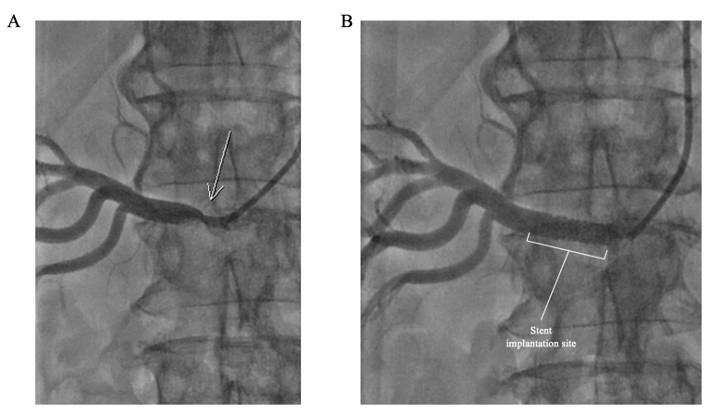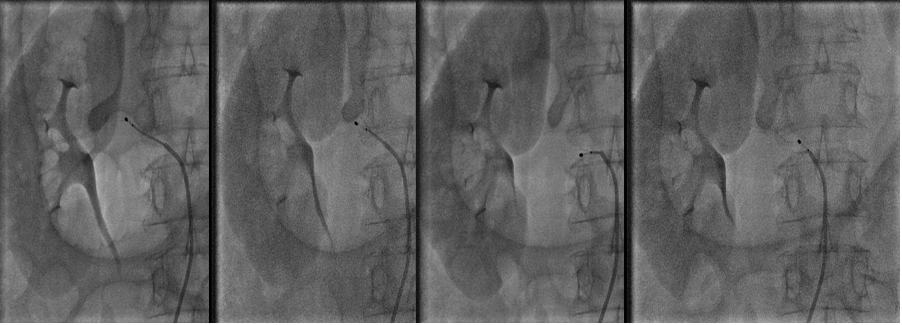Angioplasty of renal artery
In certain cases, stenosis of one or both renal arteries may be responsible for the occurrence of severe arterial hypertension. When optimal medical therapy alone is not effective and following the analysis of different imaging and biology elements, angioplasty of a renal artery with stent implantation can improve the management of your blood pressure.

How does a renal artery angioplasty take place ?
A 24 to 48-hour hospitalization is required. The day prior to the intervention, you will be given a blood thinning treatment (antiplatelet agents) to prevent clot formation into the artery.
After being installed on the examination table, a medication will be given by the anesthesiologist to relax you throughout the entire exam.
A catheter is most often introduced into the left wrist (radial artery) and a metal guidewire is then brought into the diseased artery under iodinated contrast media and X-ray guidance. The interventional cardiologist will put a stent at the site of the narrowing, the length and diameter of which will vary according to the length of the stenosis to be treated and the caliber of the renal artery.
At the end of the procedure, the guidewire and catheter are removed, and the puncture site is closed with a compressive dressing.
You will be authorized to leave the clinic the next morning, following the interventional cardiologist’s visit.
You will be given a prescription prior to your discharge from the clinic, which will include a combination of blood thinners (antiplatelet agents) prescribed for several months.
Is it dangerous ?
Complications related to renal artery angioplasty are extremely rare.
They are mostly benign and local, such as bleeding or hematoma at the arterial puncture site. Rarely the artery can be injured during the procedure, thus requiring emergent surgical repair or angioplasty. Allergic shock to iodinated contrast media is exceptional. All the potential complications are fully detailed in the informed consent form for the exam given upon admission and to be signed before the procedure.
In summary
- Hospitalization for 24-48 hours.
- Mean duration of the intervention: 20 minutes
- The intervention is painless for most patients.
- In absence of symptoms and/or bleeding at the puncture site, the patient can leave the clinic the next morning, following the interventional cardiologist’s visit.
- Rigorous compliance to the medical treatment is essential.
- Strenuous physical effort is discouraged for 72 hours following the procedure to avoid bleeding at the femoral puncture site.
Renal denervation
The intervention consists of applying a low-intensity electric current in the form of radiofrequency pulses to each renal artery in order to ablate terminal nerves located in the walls of the arteries of both kidneys. This invasive treatment aims at controlling resistant arterial hypertension with or without the continued need for antihypertensive medical therapy. This intervention is currently in evaluation and is destined for highly selected patients and in whom medical consultation among experts is necessary.
